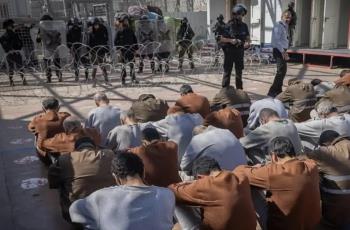Alwaght- As the time nears when the Iraqi government should present the 2021 budget to the parliament, the country’s currency market is experiencing turbulence. Media and economists talk about the government’s plan to set the budget based on the price of 1,450 Iraqi dinars for a US dollar.
Following the reports, on December 19, the dollar price in Iraq witnessed fast changes. According to reports, every $100 now vacillates between 135,000 to 138,000 Iraqi dinars.
This comes as in the past months and after coronavirus outbreak and slump in the oil prices, the Iraqi government faced a set of problems in raising money for the public budget and even paying its employees. The challenge pushed the parliament to approve a set of plans to battle the budget deficit, the most important of which is “budget deficit financing law” or simply borrowing law approved on November 12.
The main implementer of this law is the government of Prime Minister Mustafa al-Kadhimi.
This promotes some questions: Why does the government decrease the national currency dinar’s prices? What are the consequences for the people and the government?
Al-Kadhimi’s plan to tackle the budget deficit
Reduction of the dinar price against the dollar is one way by al-Kadhimi’s cabinet to tackle the budget deficit next year. Over the past years, one US dollar was dealt for 1,190 to 1,250 Iraqi dinars. But now according to the government’s budget plan for the next fiscal year, each dollar is bought by 1,450 to 1,500 Iraqi dinars. This simply means that the buying power of the Iraqi employees would be cut by 20 to 25 percent.
To put it more precisely, if an Iraqi employee is paid 1 million dinars, his money could buy $840 this year but with the dinar price cut between 16 and 17 percent, their salary can buy only $600 in 2021. This means that about $240 would be cut from their monthly pay.
With this plan, al-Kadhimi can pay his working and retired employees with even more limited financial resources whose large part comes from oil exports. This is a largely logical and efficient solution to the salary challenge as the government faces reduced incomes. At least in the short run, this can demonstrate the government as competent in its fight against the problems caused by the pandemic crisis and also the sagging oil prices.
What are the consequences?
The plan in the short run can have positive effects on the efforts to manage the country’s political conditions but it has its own ramification on the markets and society. Here are the most important of them:
1. The first and most important effect is the increase in the price of the basics. In a tangible economic equation, we can say that a 120,000 dinar product in Iraq will increase to 1,500. This price can be even higher given the increased prices of the services.
2. Taking this approach will build a tradition in this area and in the future when the governments face inflation, they will manipulate the national currency price to battle the budget deficit. Next time, one dollar can be bought for 2,000 Iraqi dinars
3. In the long run, the government’s manipulation of the national currency can cause public discontent, as the people in a short time will feel their buying power shrinkage. This will prompt demands for pay hikes.
4. The government’s move will bring over Iraqi markets a cloud of psychological disturbance and instability. Given the political culture ruling the Iraqi society, the psychological inflation on the market can in the long run ignite fresh public protests.
5. Prospectively, the Iraqi dinar can lose its value considerably against other foreign currencies.



























